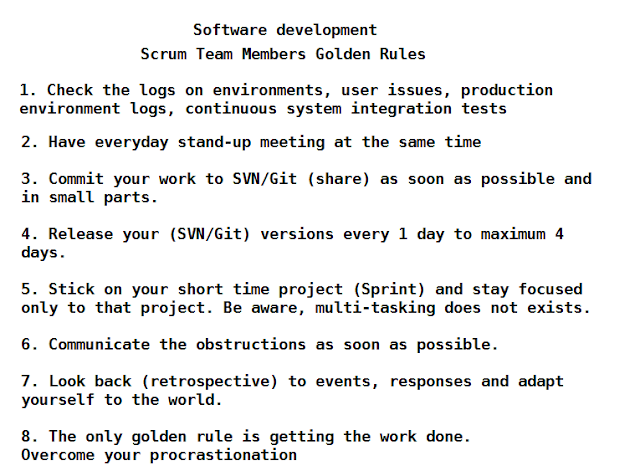Software development
"Note, these rules could be passed to different type of projects."
- Check on daily basis the logs of the system in production, test, staging and CI (Continuous Integration) test platform environments.
As the product-owner will fill the backlog by listening to user stories, by the system generated logs will reveal important information (bugs and quirks) which also should be written to the backlog. The information in the system logs will match some user stories, but you will be then earlier aware of the problems. This is a must have if there is no test team.
- Everyday early in the morning at 9:00 or 10:00 AM have an actively stand-up meeting with the team members. Every member should ask the following questions and answer them:
- What did you reached since last stand-up?
- What are you planning todo today?
- Are there any problems?
- Collaborate by sharing your work as soon as possible with the team members. This is, before going public, not only a back-up for your work but also feedback from your colleagues to improve your work in a short time of period.
- Dare to share as soon as possible
- Become 1 with the team you are working with
- Manage only your own work, don't be a boss, become a "leader" by helping other team members.
- Label your work every 1 day to maximum 4 days. Your work should have milestones, probably sequential numbers, and save this with a name. Like v3091, v3093, v3095.
- Stick on your short time project (Sprint) and stay focused only to that project. Be aware, multi-tasking does not exists.
- Communicate the obstructions and impedance as soon as possible.
- Look back (retrospective) to events, responses and adapt yourself to the world.
- The only real golden rule is "getting your work done".
- Overcome your procrastination.



